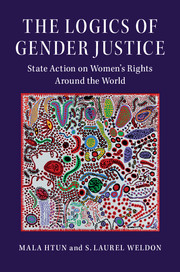Book contents
- The Logics of Gender Justice
- Cambridge Studies in Gender and Politics
- The Logics of Gender Justice
- Copyright page
- Dedication
- Contents
- Figures
- Tables
- Preface and Acknowledgments
- 1 Introduction
- 2 Feminist Mobilization and Status Politics
- 3 Governing Women’s Legal Status at Work
- 4 Doctrinal Politics
- 5 Class Politics
- 6 Reproductive Rights
- 7 The Multiple Logics of Gender Justice
- Conclusion
- Book part
- References
- Index
- References
References
Published online by Cambridge University Press: 23 February 2018
- The Logics of Gender Justice
- Cambridge Studies in Gender and Politics
- The Logics of Gender Justice
- Copyright page
- Dedication
- Contents
- Figures
- Tables
- Preface and Acknowledgments
- 1 Introduction
- 2 Feminist Mobilization and Status Politics
- 3 Governing Women’s Legal Status at Work
- 4 Doctrinal Politics
- 5 Class Politics
- 6 Reproductive Rights
- 7 The Multiple Logics of Gender Justice
- Conclusion
- Book part
- References
- Index
- References
- Type
- Chapter
- Information
- The Logics of Gender JusticeState Action on Women's Rights Around the World, pp. 303 - 338Publisher: Cambridge University PressPrint publication year: 2018
References
- 1
- Cited by

